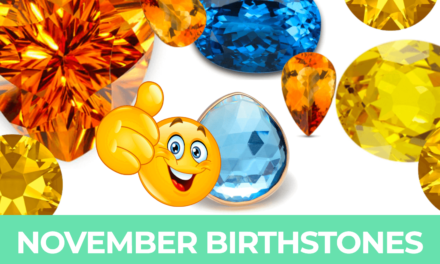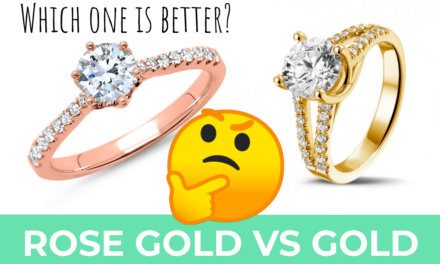My website is reader-supported. Buying through links on my site may result in me earning a CUSTOMER REFERRAL FEE at no extra cost to you.
Check out the latest deals at our top diamond vendor choice: James Allen
Is a D-Color Diamond Worth Your Money?
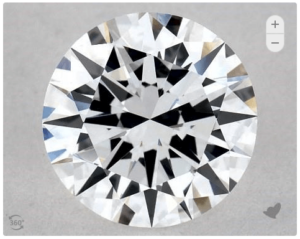
D color diamond, 1.00 Carat Round Diamond, VVS2 Clarity, Ideal Cut
D-color diamonds are the most valuable and coveted of all diamonds because of their perfect color. But what is it about these gems that sets them apart from other diamonds? And are they worth the price tag?
In this blog post, we’ll take a closer look at D-color diamonds and explore whether they are worth the premium price. We’ll also provide some tips for buying an engagement ring, so you can make sure you get the best value for your money.
Content overview
D Color Diamond Summary
- Diamonds are graded from D-Z based on the amount of color they exhibit; a D color diamond is completely colorless
- A D-color diamond is scarce and significantly more expensive than diamonds in the near-colorless range (G through I)
- Often, only idealists consider a D-diamond since they are paying for a feature that neither a layperson nor an expert can see with the naked eye
- In most cases, you can get a cheaper diamond with a lower color grade that looks equally stunning (recommendations for various ring setting metals and diamond shapes included in this article)
- The best places to shop for D-color diamonds are James Allen and Blue Nile
What is D color in a diamond?
The GIA (Gemological Institute of America) grades a diamond’s color on a D – Z scale based on the absence or presence of color. D represents the highest color grade for white diamonds and Z the lowest.
A D-diamond is entirely white (i.e., colorless). Some people also refer to D-diamonds as icy-white.
It’s estimated that less than 1% of the world’s natural-occurring diamonds are completely colorless, making them a scarce resource and quite expensive.
Along with E– and F-color diamonds, D color diamonds belong to the so-called colorless range. While E- and F-diamonds exhibit slightly more color (yellow tints) than a D diamond, neither a layperson nor an expert could tell them apart without a jewelers loupe under perfect light conditions.
That’s why often only idealists and those with a very generous budget consider D diamonds for a diamond engagement ring. Most people opt for lower diamond color grades because they understand that purchasing a D diamond means paying for a feature they can’t see with the naked eye.
Where does D fall on the GIA grading scale?
There are three distinct color ranges according to the GIA color scale:
- Colorless diamonds: D, E, and F color diamonds belong to this category; these diamonds are characterized by the absence of color; you usually pay a significant premium price for colorless diamonds
- Near-colorless range: G, H, and I color diamonds; these exhibit a slight amount of yellow color, but it’s still difficult to see with the naked eye, especially when the diamond is mounted on a rose or yellow gold setting. These diamonds can still have an icy white appearance
- Diamonds with visible color: J through Z graded diamonds; these exhibit yellow or brown tints that are visible to the naked eye and might not be suitable for a white gold setting
You can see the three grades in the GIA color scale below:

Note that fancy colored diamonds are not graded based on the above scale. Fancy-colored diamonds are graded based on the intensity of the color. You can read more about fancy colored diamonds here.
Can you tell the difference between a D-, E-, and F color diamond?
It is nearly impossible to tell diamonds in the colorless range apart. For example, neither a layperson nor an expert could say whether the below diamond is a D color grade diamond or an F color grade diamond.
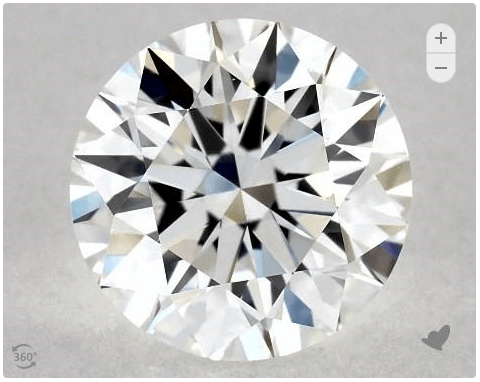
It’s, in fact, an F-color diamond. But only an expert would be able to say so with the proper tools and reference scales.
Below, I’m showing you three diamonds in descending color order to demonstrate how difficult it is to differentiate between the color grades.
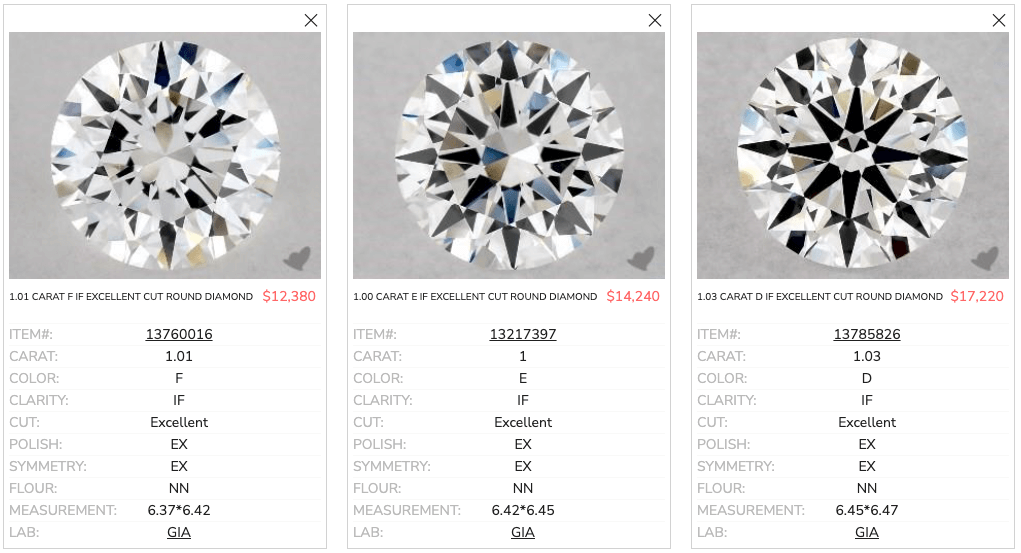
How much do E color diamonds cost?
E color diamonds tend to be pretty expensive because they are scarce. However, keep in mind that the diamond’s price is determined not only by its color grade but also by the cut quality, carat weight, diamond shape, clarity grade, etc.
That said, a 1-carat E color grade diamond with an ideal cut and a VS1 clarity grade would cost you anywhere between $7,000 and $13,000.
Below, I outlined in a chart how the diamond’s color affects the diamond price for a round diamond with an ideal cut and a VVS1 clarity grade:
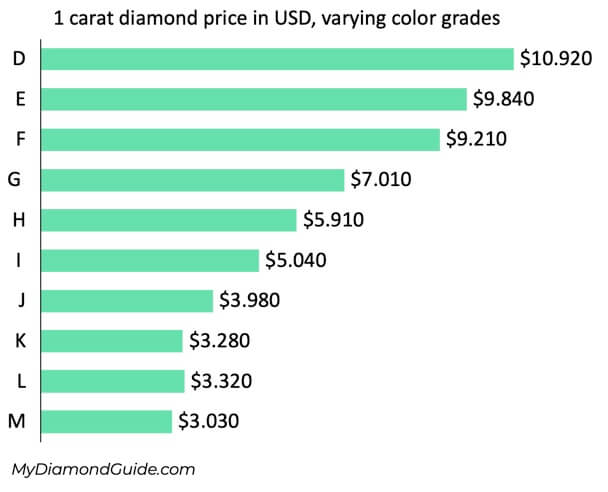
As you can see, the price drops significantly once you move to the nearly colorless grade diamonds. It’s usually only idealists chasing the perfect diamond for their engagement ring who would consider diamonds in the colorless range.
While there is nothing wrong with that, know that you can save quite some money if you opt for a lower color grade with the same icy white appearance as colorless diamonds.
When does it make sense to opt for a lower color grade?
Generally, it always makes sense to opt for a lower color grade budget-wise. That’s because you can find the same diamond quality in terms of visual appearance and durability within lower color grades.
You will always pay a premium price for a colorless diamond, even though you can’t see a difference between a D or a G color diamond.
Below, I summarized my recommendations for what color to choose based on the ring setting’s metal and your preferred diamond shapes:
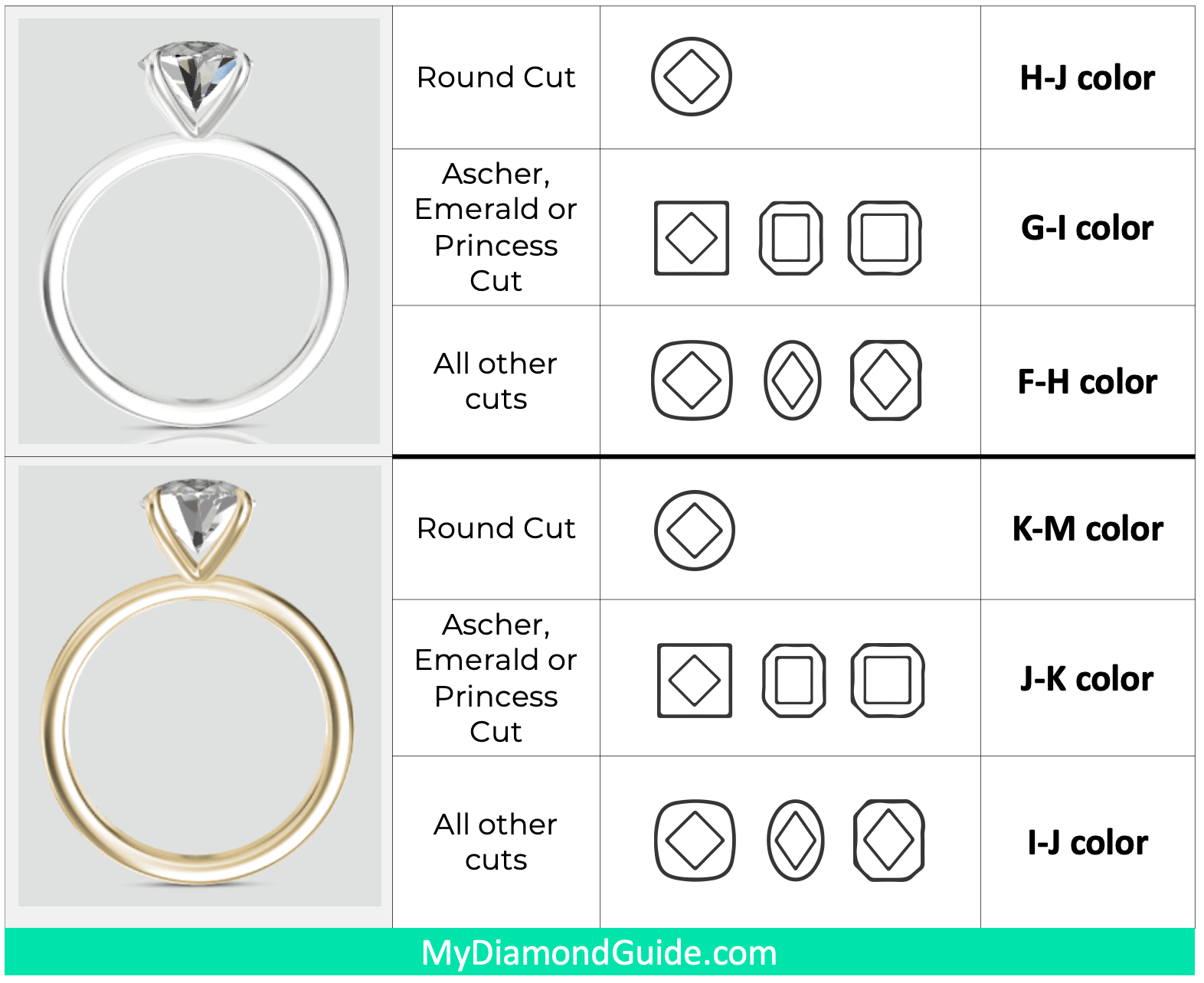
As you can see, round cut diamonds typically require a lower color grade than certain fancy-shaped diamonds or other diamond shapes.
It also matters what type of diamond ring setting you choose. If you opt for a white gold or platinum setting, you’d need a higher color grade than if you choose a yellow gold setting.
That said, there’s nothing wrong with purchasing a D-color diamond. A D diamond will look stunning (if you opt for a good cut quality and clarity grade). Just know that you are paying a premium for something you cannot see.
Where can I buy a D colored diamond?
D color diamonds are sometimes a bit challenging to get by if you go to a local brick and mortar store because they are scarce.
But that doesn’t matter much because I always recommend that you look at certain online vendors first. Shopping for a diamond online has several advantages, including:
- Being able to inspect a diamond carefully before purchasing
- Not being pressured into purchasing a higher color or clarity grade than you need
- The convenience of shopping from your home
- Much lower prices compared to brick-and-motor stores
My top two vendor recommendations include James Allen and Blue Nile. Both have a vast selection of diamonds, including D color diamonds.
If you shop at James Allen, you can also try out their new mobile ring simulator, which allows you to mount any ring setting and diamond of your choice on your financee-to-be’s hand.
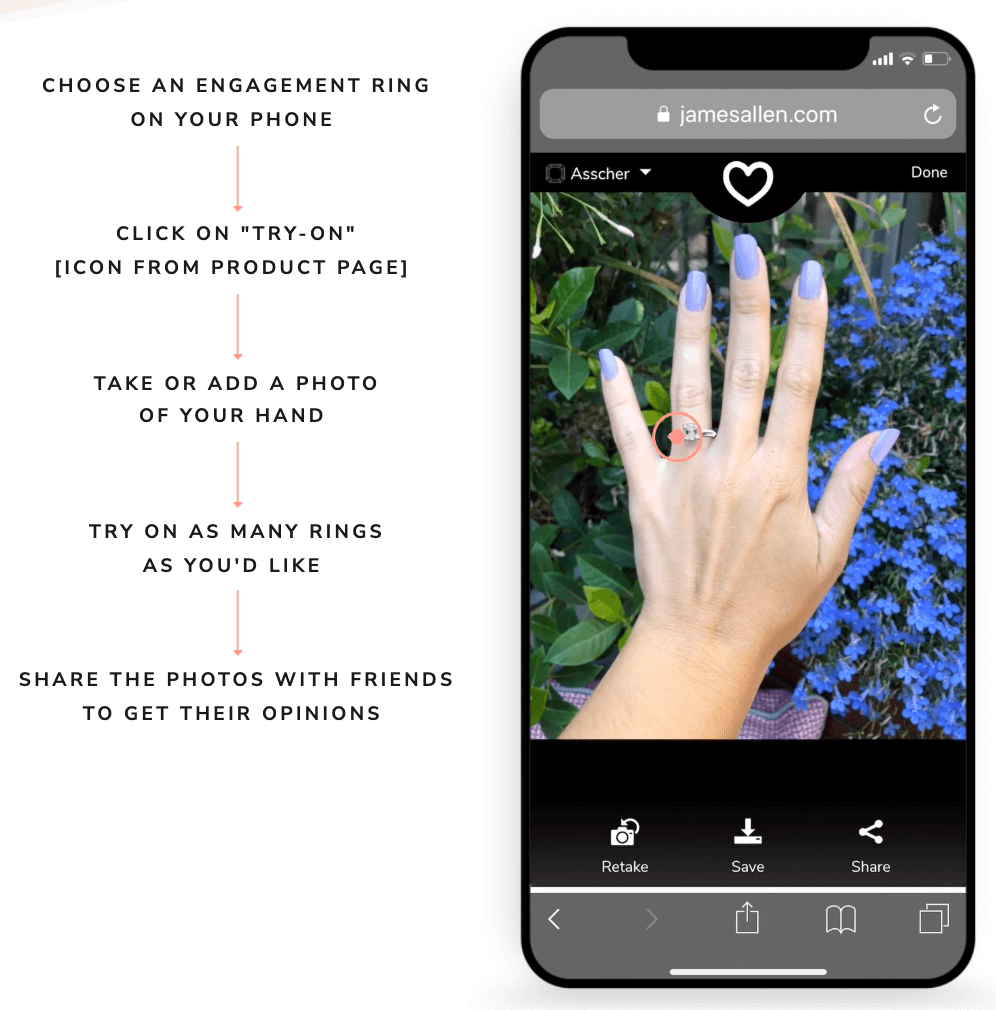
You can check it out here.
FAQs about D diamonds
Is D the clearest diamond?
A D color diamond has the least amount of body color (aka none) but it is not necessarily the clearest diamond. The clarity of a diamond is determined by the number, size, and location of inclusion and blemishes. You can check my blog post about diamond clarity here.
Is D diamond better than F?
Yes, a D-color diamond is better than F in terms of color. Even though you can’t see a difference with the naked eye, an F color diamond exhibits slightly more color than a D color diamond. However, that doesn’t mean that a D color diamond is always better than an F color diamond. Most important in determining the diamond’s quality is its cut quality and clarity grade.
Conclusion
When you buy a diamond engagement ring, it’s important to consider the features that will be visible and those that won’t. For example, if your intention is for your fiancé or spouse to wear their ring every day and show off its beauty in any light possible, then you’ll want them to choose colors grades within the near-colorless range so they can see all of their sparkles. These diamond color grades usually don’t exhibit any visible yellow tint.
Most often, you do not need to spend an extra $1,000 on a D-color grade because this feature cannot be seen with the naked eye.
This way, you can save money and get more carat weight without having to pay an additional premium price for features you can’t see or appreciate with your eyes. Go ahead and use James Allen’s search function to find diamonds close to these grade levels.

